On the DC Offset Current Generated during Biphasic Stimulation: Experimental Study
Abstract
1. Introduction
2. Measurement Setup
2.1. System Overview
2.2. DC Offset Current Detection Test Board
2.3. Platinum Electrodes Matrix
3. Stimulation Procedures And Methods
3.1. Preliminary Procedures
3.2. Stimulation Patterns
3.3. Stimulation Specifications
3.4. Measurements Procedures
4. Measurement Results
4.1. All Adjacent and Hex Quasi-Monopolar Stimulation Patterns’ Comparison
4.2. Hex Quasi-Monopolar Multi-Site Excitation
4.3. Hex Quasi-Monopolar Multi-Site Interaction
5. Conclusions
Funding
Acknowledgments
Conflicts of Interest
References
- Lilly, J.; Hughes, J.; Alvord, E.; Galkin, T. Brief, Noninjurious Electric Waveform for Stimulation of the Brain. Science 1955, 121, 468–469. [Google Scholar] [CrossRef] [PubMed]
- Huang, C.Q.; Carter, P.M.; Shepherd, R.K. Stimulus induced pH changes in cochlear implants: An in vitro and in vivo study. Ann. Biomed. Eng. 2001, 29, 791–802. [Google Scholar] [CrossRef] [PubMed]
- Merrill, D.R.; Bikson, M.; Jefferys, J.G. Electrical stimulation of excitable tissue: Design of efficacious and safe protocols. J. Neurosci. Methods 2005, 141, 171–198. [Google Scholar] [CrossRef] [PubMed]
- John, S.E.; Shivdasani, M.N.; Leuenberger, J.; Fallon, J.B.; Shepherd, R.K.; Millard, R.E.; Rathbone, G.D.; Williams, C.E. An automated system for rapid evaluation of high-density electrode arrays in neural prostheses. J. Neural Eng. 2011, 8, 036011. [Google Scholar] [CrossRef] [PubMed]
- Brummer, S.B.; Turner, M.J. Electrical stimulation with pt electrodes. II. estimation of maximum surface redox (theoretical nongassing) limits. IEEE Trans. Biomed. Eng. 1977, BME-24, 440–443. [Google Scholar] [CrossRef] [PubMed]
- Aran, J.M.; Wu, Z.Y.; Cazals, Y.; de Sauvage, R.C.; Portmann, M. Electrical stimulation of the ear: Experimental studies. Ann. Otol. Rhinol. Laryngol. 1983, 92, 614–620. [Google Scholar] [CrossRef] [PubMed]
- Hurlbert, R.J.; Tator, C.H.; Theriault, E. Dose-response study of the pathological effects of chronically applied direct current stimulation on the normal rat spinal cord. J. Neurosurg. 1993, 79, 905–916. [Google Scholar] [CrossRef] [PubMed]
- Shepherd, R.K.; Linahan, N.; Xu, J.; Clark, G.M.; Araki, S. Chronic electrical stimulation of the auditory nerve using non-charge-balanced stimuli. Acta Otolaryngol. 1999, 119, 674–684. [Google Scholar] [CrossRef] [PubMed]
- Xu, J.; Shepherd, R.K.; Millard, R.; Clark, G.M. Chronic electrical stimulation of the auditory nerve at high stimulus rates: A physiological and histopathological study. Hear Res. 1997, 105, 1–29. [Google Scholar] [CrossRef]
- Franke, M.; Bhadra, N.; Bhadra, N.; Kilgore, K. Direct current contamination of kilohertz frequency alternating current waveforms. J. Neurosci. Methods 2014, 232, 74–83. [Google Scholar] [CrossRef]
- Huang, C.Q.; Shepherd, R.K.; Carter, P.M.; Seligman, P.M.; Tabor, B. Electrical stimulation of the auditory nerve: Direct current measurement in vivo. IEEE Trans. Biomed. Eng. 1999, 46, 61–470. [Google Scholar] [CrossRef] [PubMed]
- Carter, P.; Money, D. Feedback System to Control Electrode Voltages in a Cochlear Stimulator and the Like. U.S. Patent US5674264, 7 October 1996. [Google Scholar]
- Huang, C.Q.; Shepherd, R.K.; Seligman, P.M.; Clark, G.M. Reduction in excitability of the auditory nerve following acute electrical stimulation at high stimulus rates. III. capacitive versus non-capacitive coupling of the stimulating electrodes. Hear. Res. 1998, 116, 55–64. [Google Scholar] [CrossRef]
- Dommel, N.; Wong, Y.T.; Lehmann, T.; Dodds, C.W.; Lovell, N.H.; Suaning, G.J. A CMOS retinal neurostimulator capable of focused, simultaneous stimulation. J. Neural Eng. 2009, 6, 035006. [Google Scholar] [CrossRef] [PubMed]
- Greenwald, E.; Maier, C.; Wang, Q.; Beaulieu, R.; Etienne-Cummings, R.; Cauwenberghs, G.; Thakor, N. A CMOS Current Steering Neurostimulation Array With Integrated DAC Calibration and Charge Balancing. IEEE Trans. Biomed. Circuits Syst. 2017, 11, 324–335. [Google Scholar] [CrossRef] [PubMed]
- Luo, Z.; Ker, M. A High-Voltage-Tolerant and Precise Charge-Balanced Neuro-Stimulator in Low Voltage CMOS Process. IEEE Trans. Biomed. Circuits Syst. 2016, 10, 1087–1099. [Google Scholar] [CrossRef] [PubMed]
- Lehmann, T.; Chun, H.; Preston, P.; Suaning, G. Current-limited passive charge recovery for implantable neuro-stimulators: Power savings, modelling and characterisation. In Proceedings of the 2010 IEEE International Symposium on Circuits and Systems, Paris, France, 30 May–2 June 2010; pp. 3128–3131. [Google Scholar]
- Chun, H.; Yang, Y.; Lehmann, T. Safety ensuring retinal prosthesis with precise charge balance and low power consumption. IEEE Trans. Biomed. Circuits Syst. 2013, 8, 108–118. [Google Scholar] [CrossRef] [PubMed]
- Rose, T.L.; Robblee, L.S. Electrical stimulation with Pt electrodes. VIII. Electrochemically safe charge injection limits with 0.2 ms pulses. IEEE Trans. Biomed. Eng. 1990, 37, 1118–1120. [Google Scholar] [CrossRef] [PubMed]
- Linear Technology. Single Resistor Gain Programmable, Precision Instrumentation Amplifier. Technical Data. Available online: http://cds.linear.com/docs/en/datasheet/1167fc.pdf (accessed on 23 July 2020).
- Analog Device. LC2MOS 16-Channel High Performance Analog Multiplexers, Technical Data. Available online: http://www.analog.com/media/en/technical-documentation/data-sheets/ADG406_407_426.pdf (accessed on 23 July 2020).
- Moghadam, G.K.; Wilke, R.; Suaning, G.J.; Lovell, N.H.; Dokos, S. Quasi-monopolar stimulation: A novel electrode design configuration for performance optimization of a retinal neuroprosthesis. Public Libr. Sci. 2013, 8, 73130. [Google Scholar] [CrossRef] [PubMed][Green Version]
- Wong, Y.T.; Dommel, N.; Preston, P.; Hallum, L.E.; Lehmann, T.; Lovell, N.H.; Suaning, G.J. Retinal Neurostimulator for a Multifocal Vision Prosthesis. IEEE Trans. Neural Syst. Rehabil. Eng. 2007, 150, 425–434. [Google Scholar] [CrossRef] [PubMed]
- Matteucci, P.B.; Chen, S.C.; Dodds, C.; Dokos, S.; Lovell, N.H.; Suaning, G.J. Threshold analysis of a quasimonopolar stimulation paradigm in visual prosthesis. In Proceedings of the 2012 Annual International Conference of the IEEE Engineering in Medicine and Biology Society, San Diego, CA, USA, 28 August–1 September 2012; pp. 2997–3000. [Google Scholar]
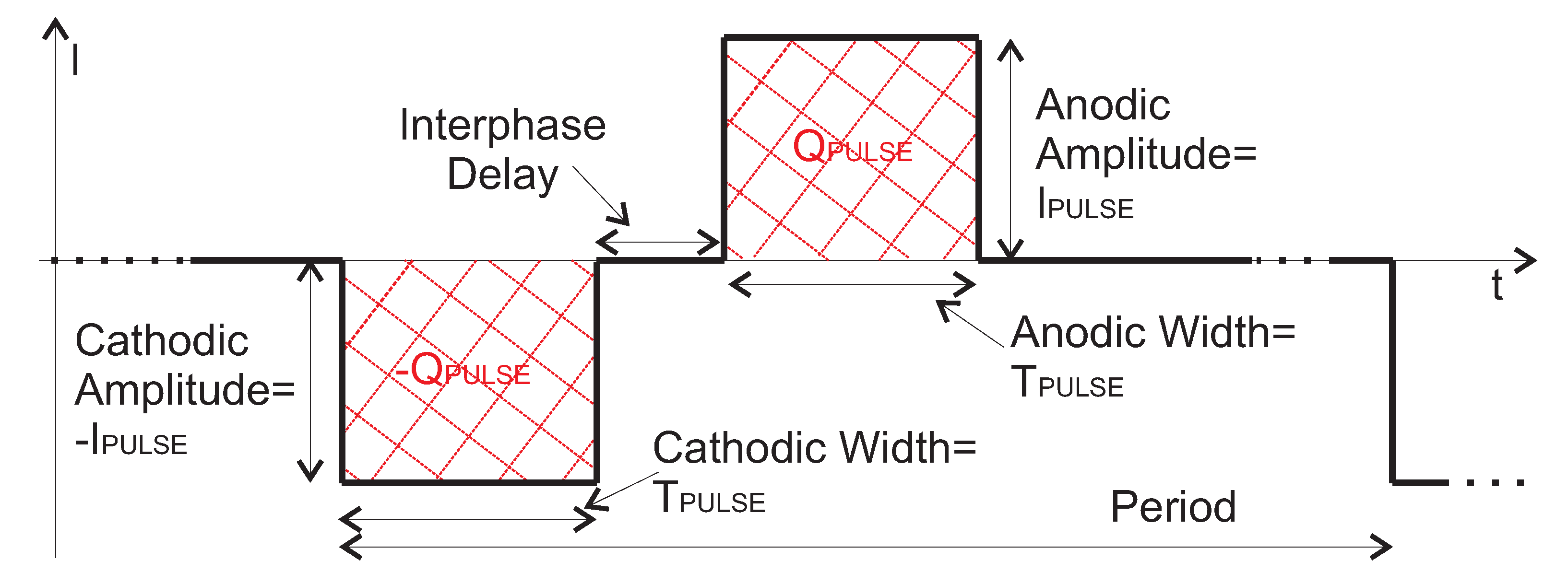
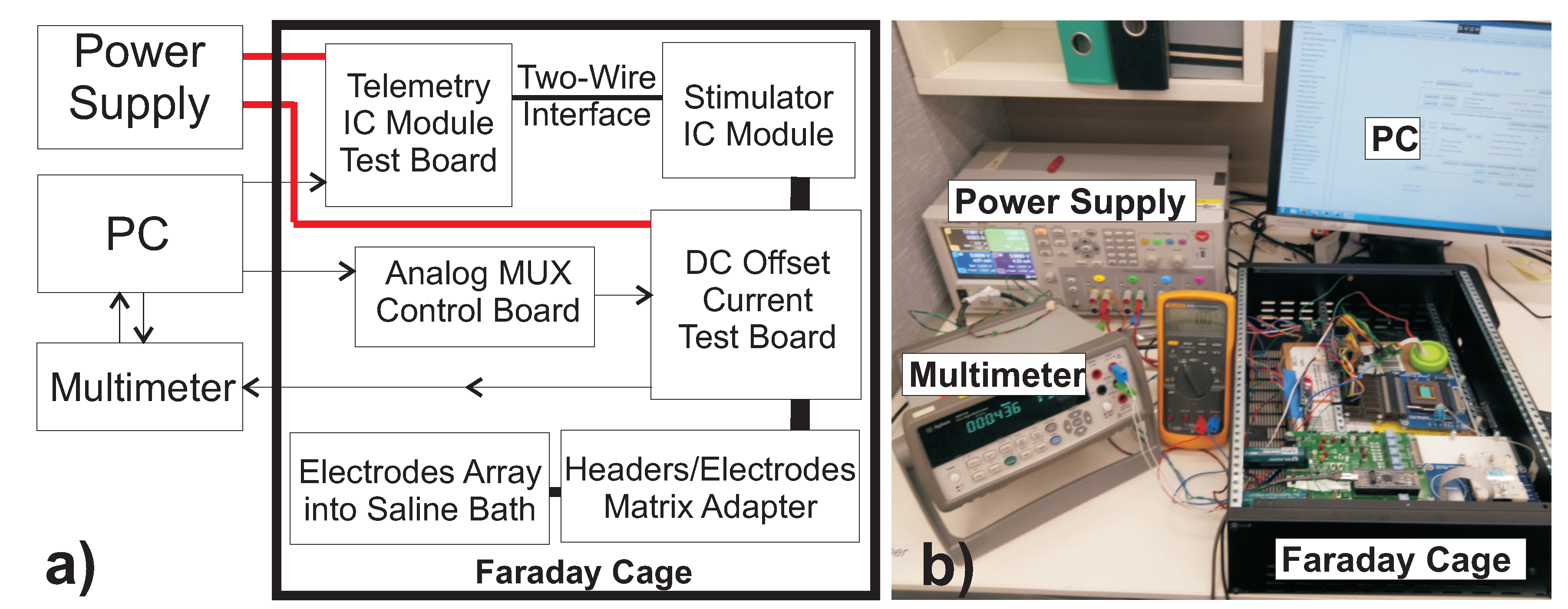
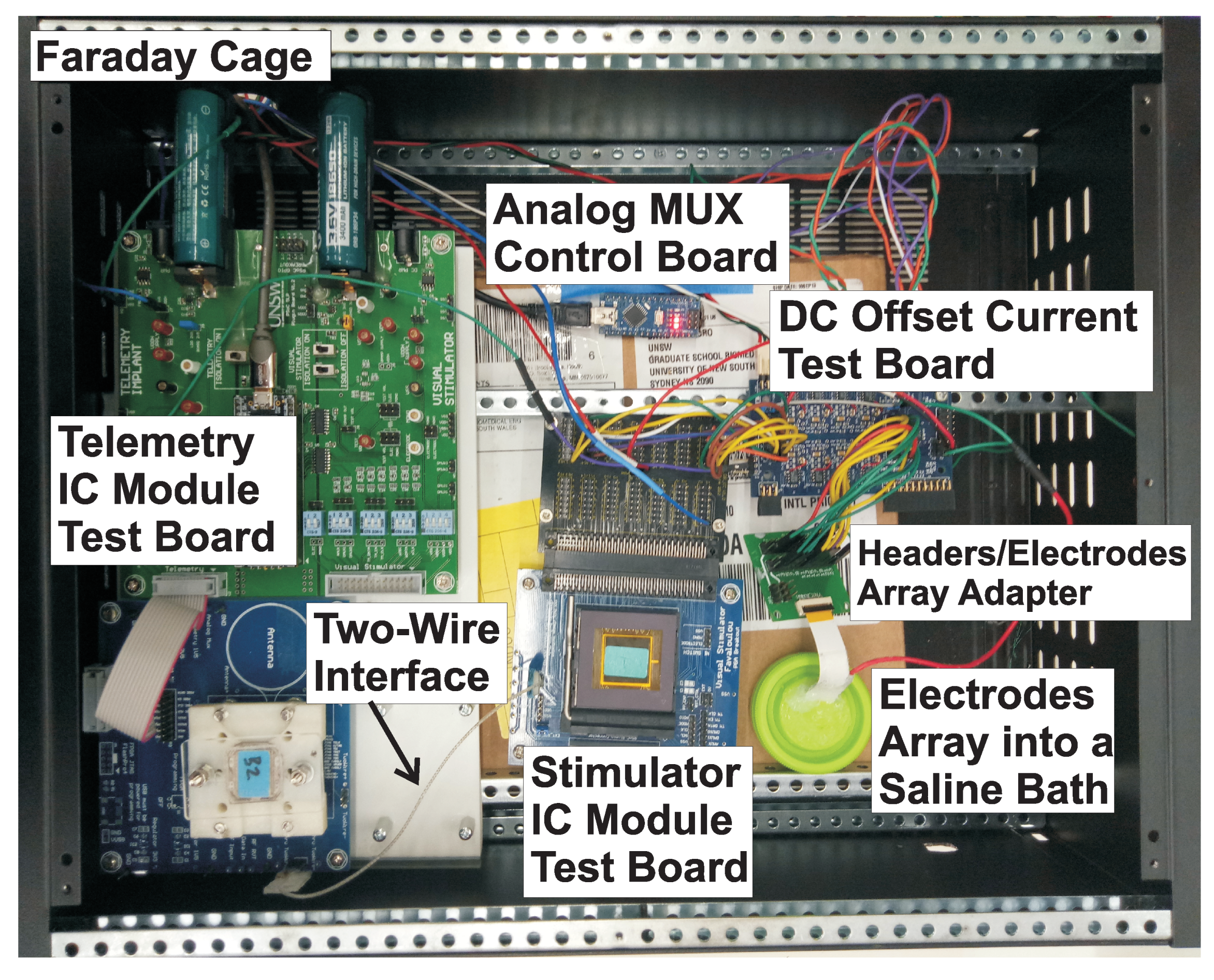
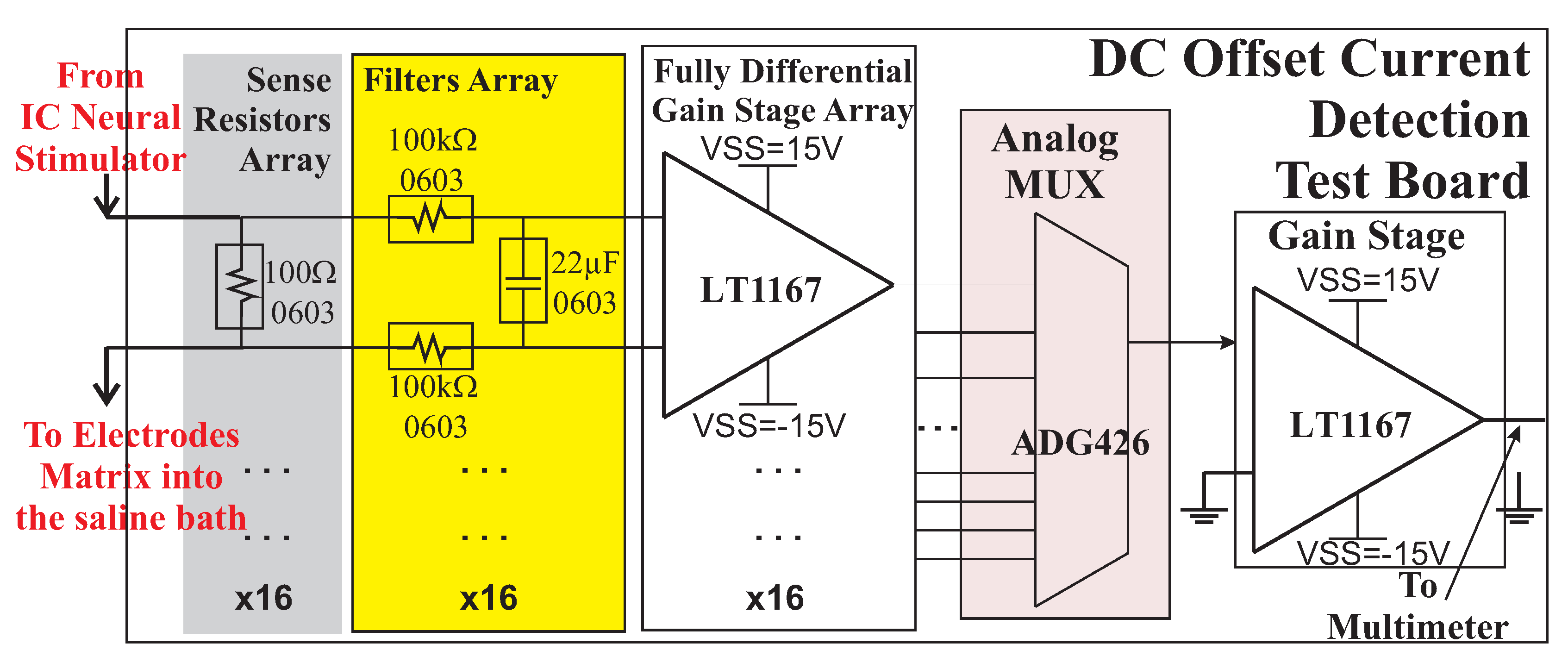
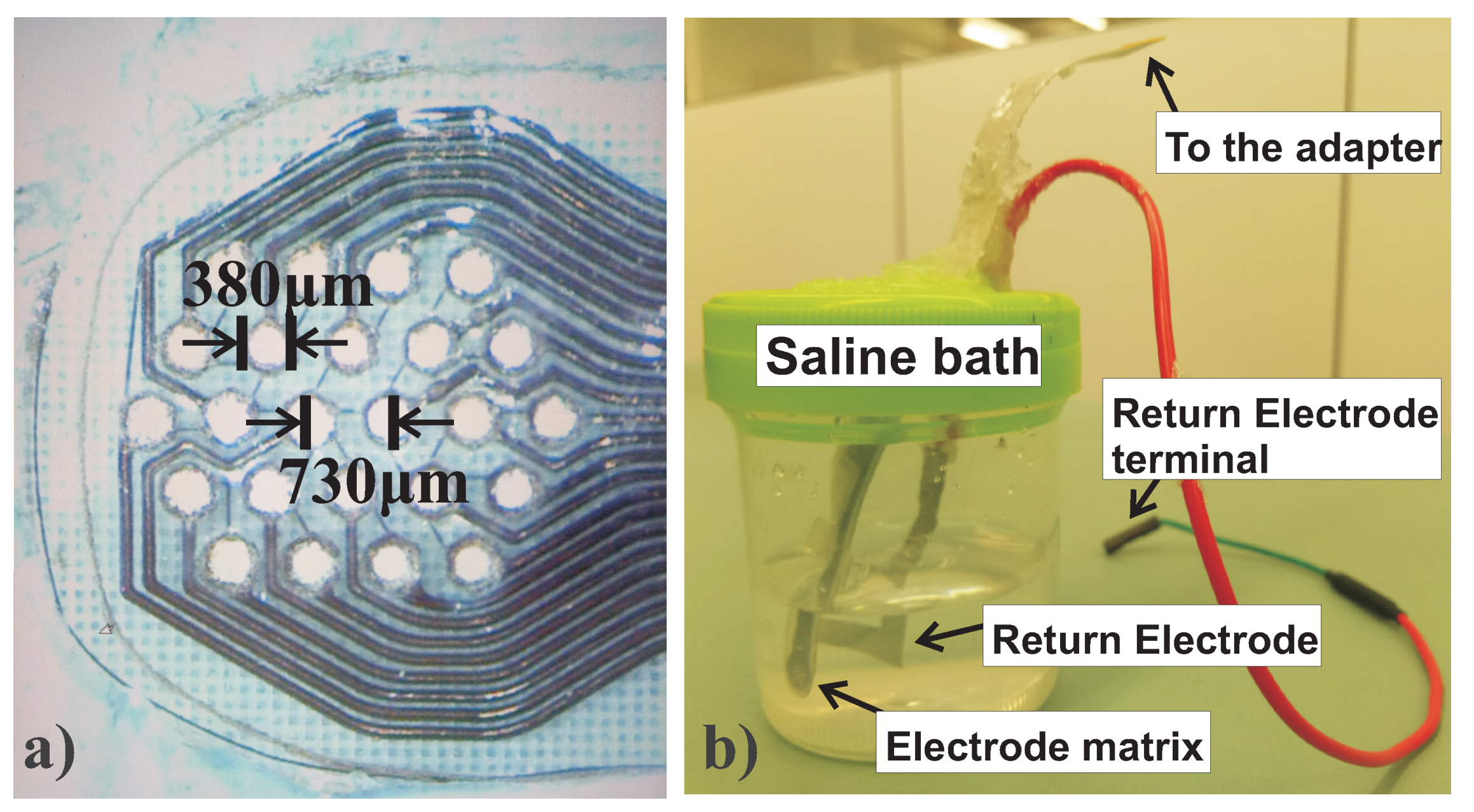
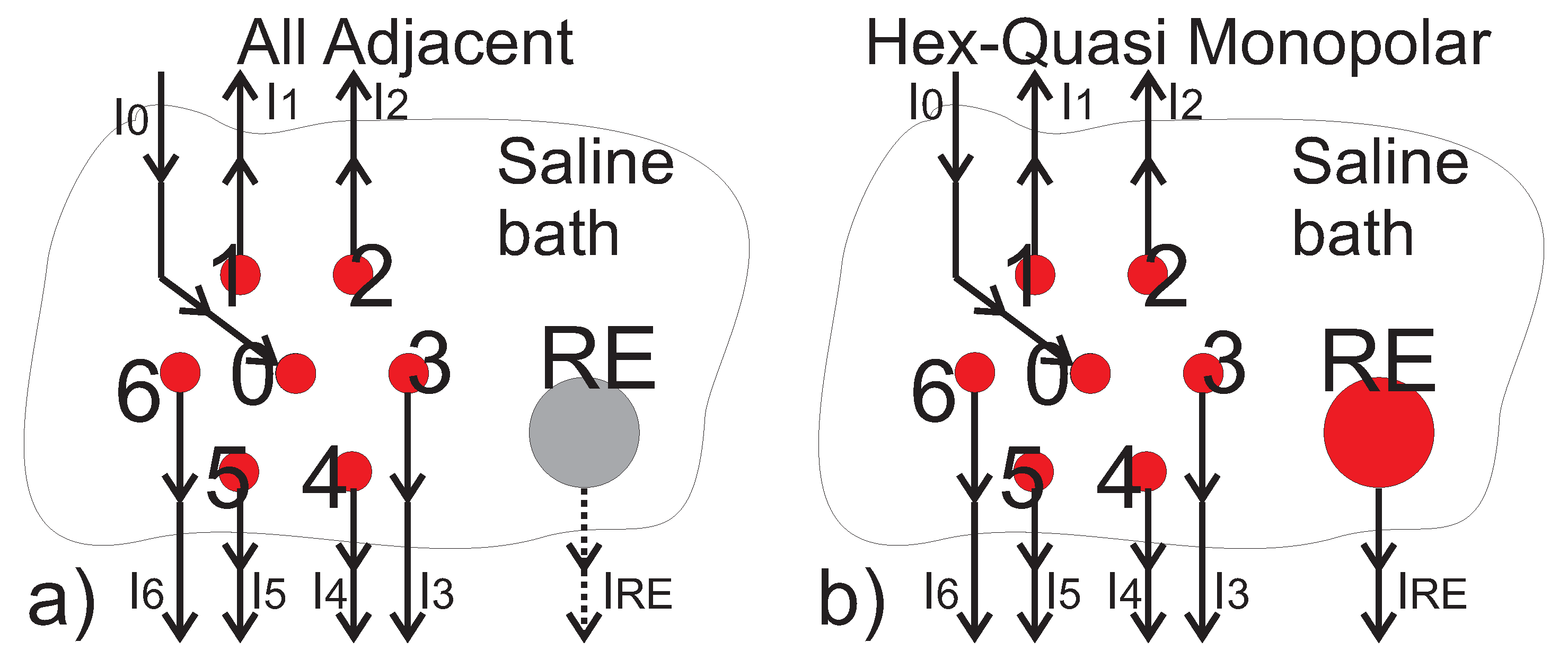
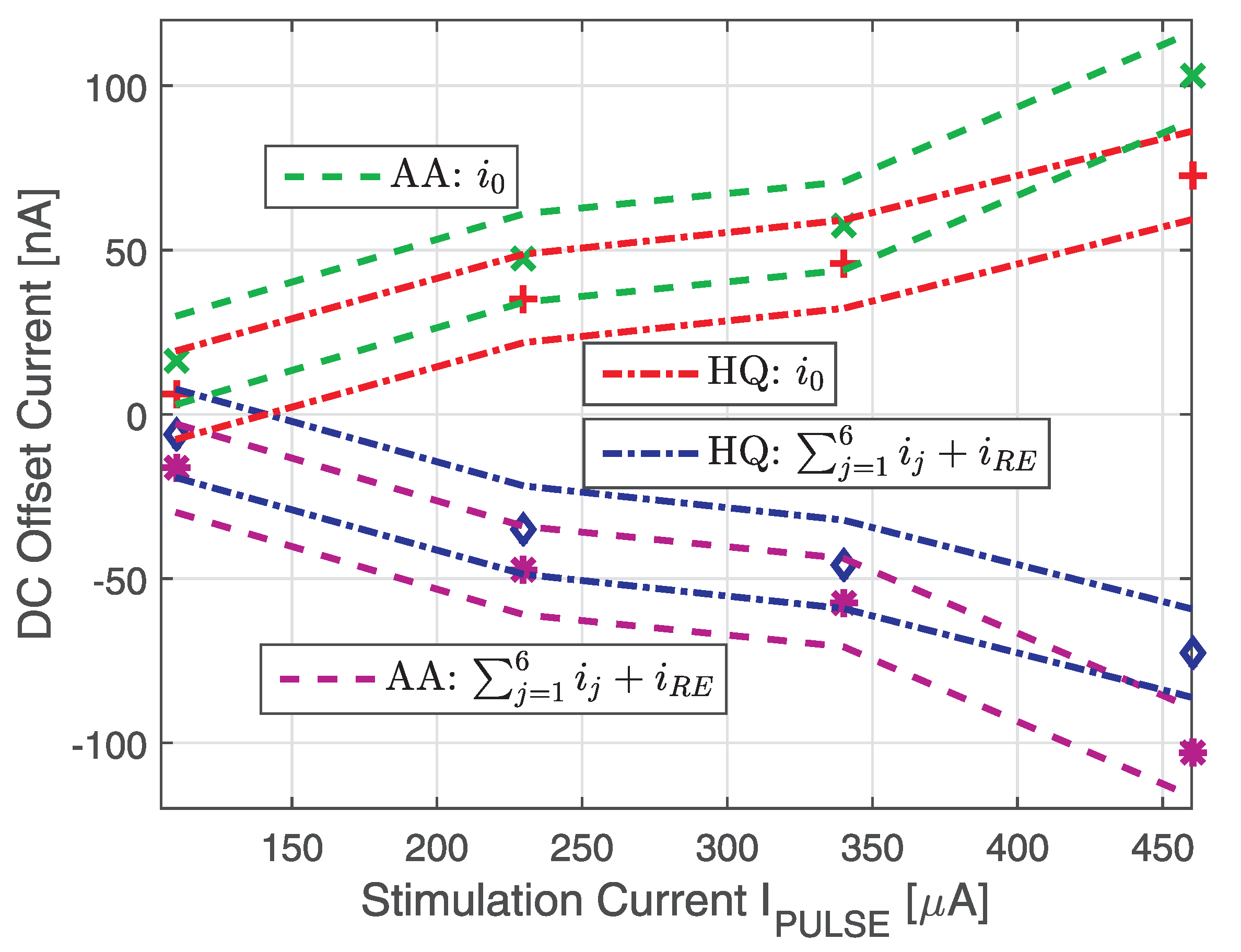
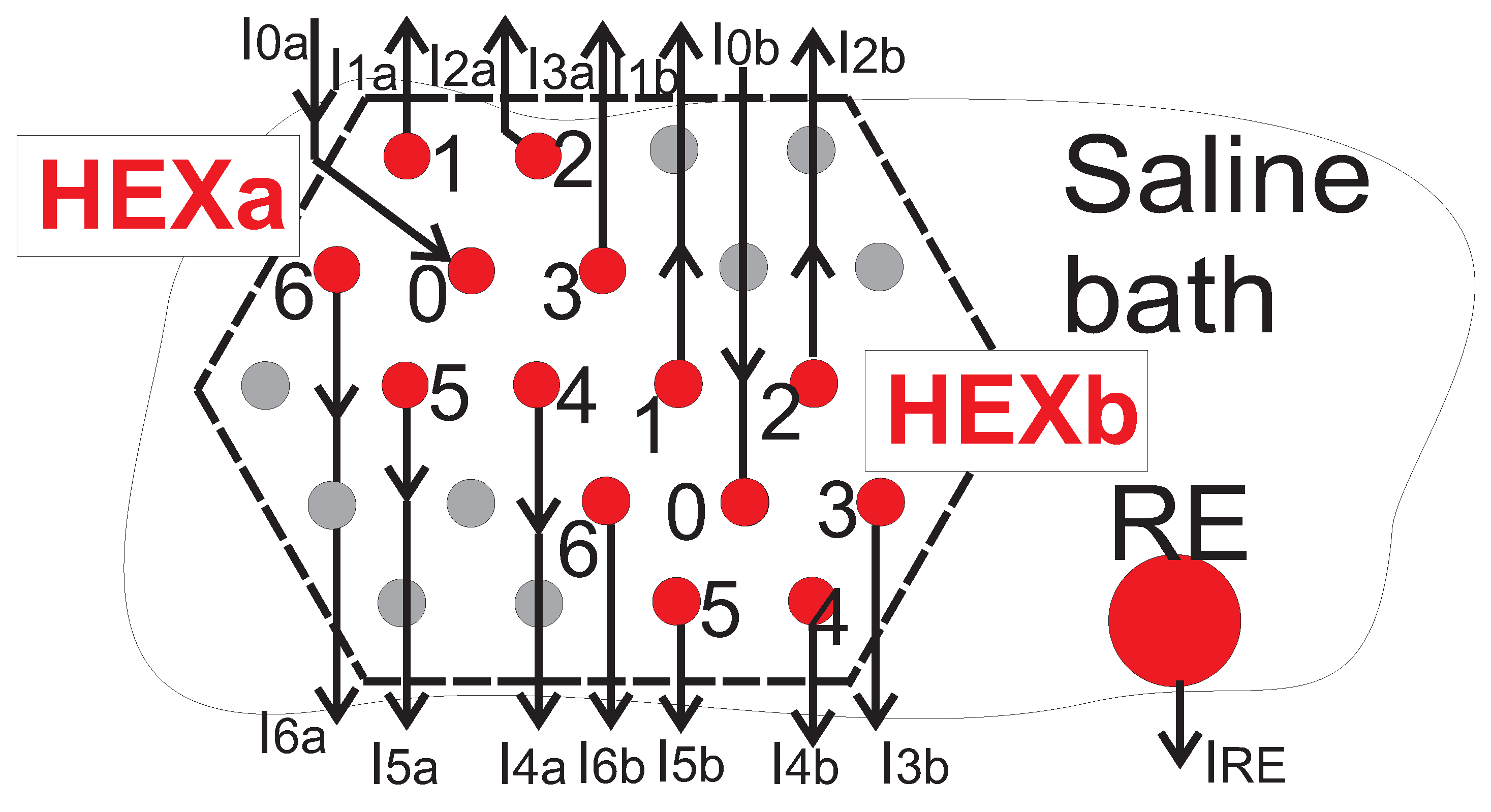
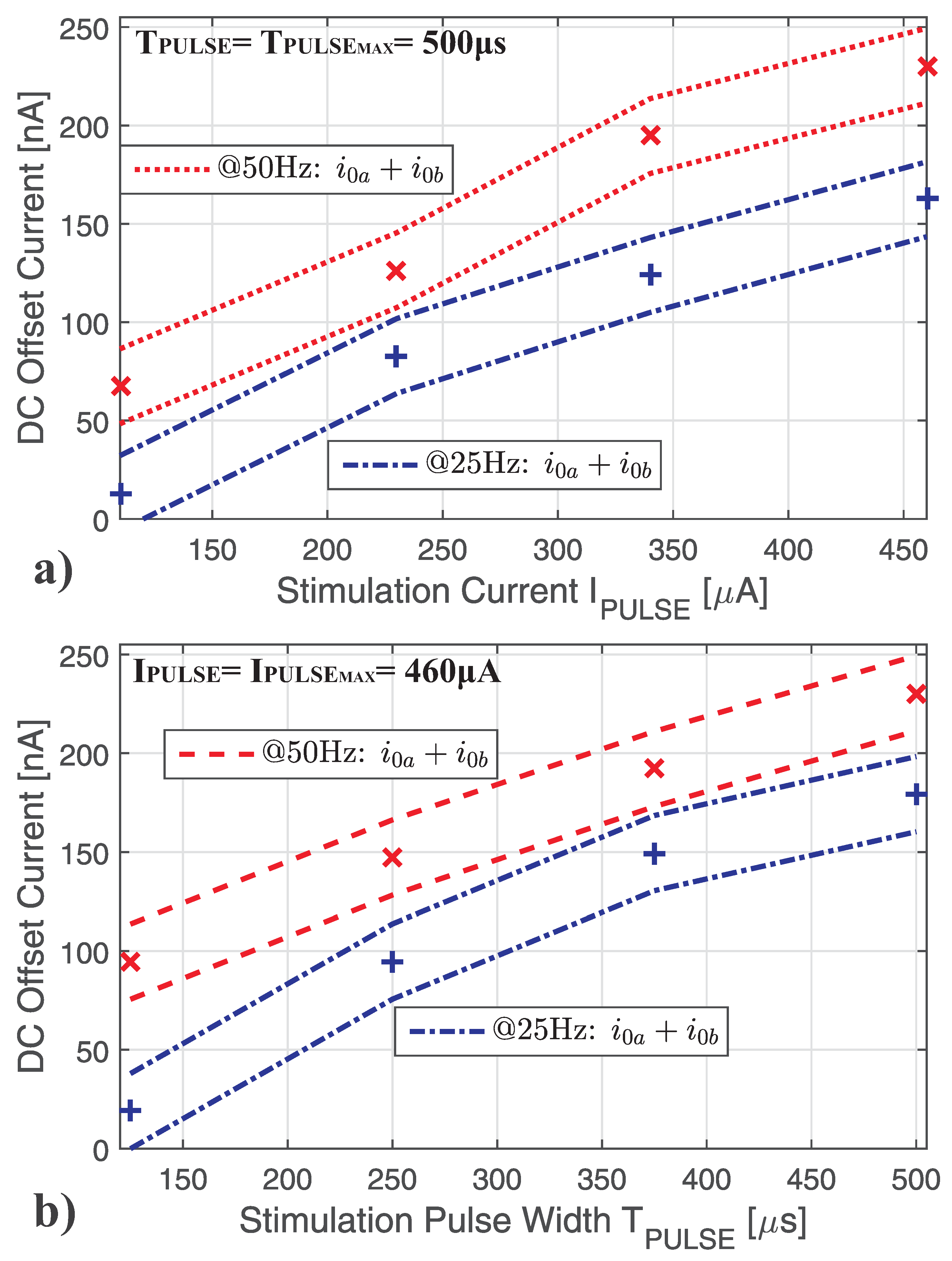
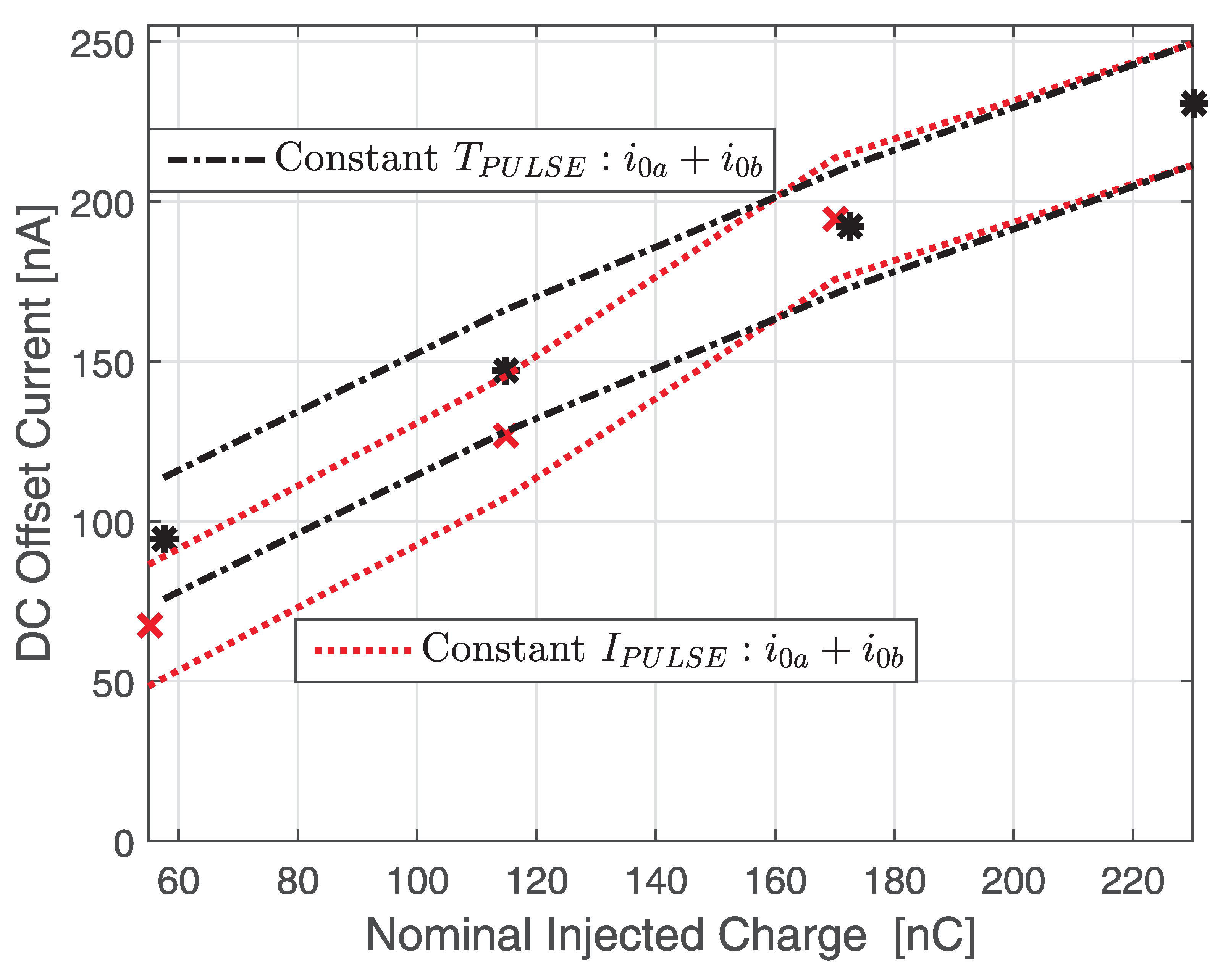

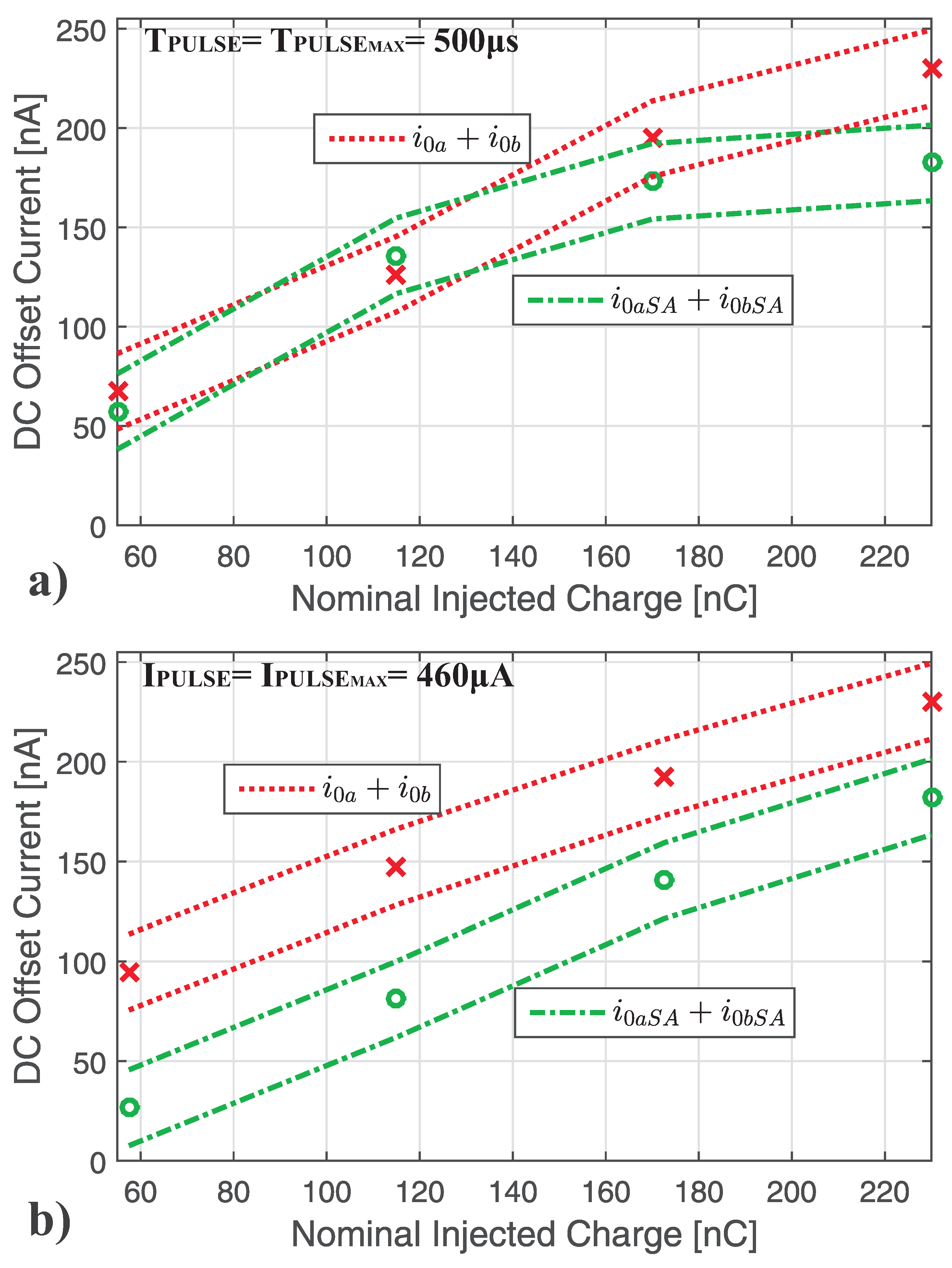
© 2020 by the author. Licensee MDPI, Basel, Switzerland. This article is an open access article distributed under the terms and conditions of the Creative Commons Attribution (CC BY) license (http://creativecommons.org/licenses/by/4.0/).
Share and Cite
Aiello, O. On the DC Offset Current Generated during Biphasic Stimulation: Experimental Study. Electronics 2020, 9, 1198. https://doi.org/10.3390/electronics9081198
Aiello O. On the DC Offset Current Generated during Biphasic Stimulation: Experimental Study. Electronics. 2020; 9(8):1198. https://doi.org/10.3390/electronics9081198
Chicago/Turabian StyleAiello, Orazio. 2020. "On the DC Offset Current Generated during Biphasic Stimulation: Experimental Study" Electronics 9, no. 8: 1198. https://doi.org/10.3390/electronics9081198
APA StyleAiello, O. (2020). On the DC Offset Current Generated during Biphasic Stimulation: Experimental Study. Electronics, 9(8), 1198. https://doi.org/10.3390/electronics9081198




